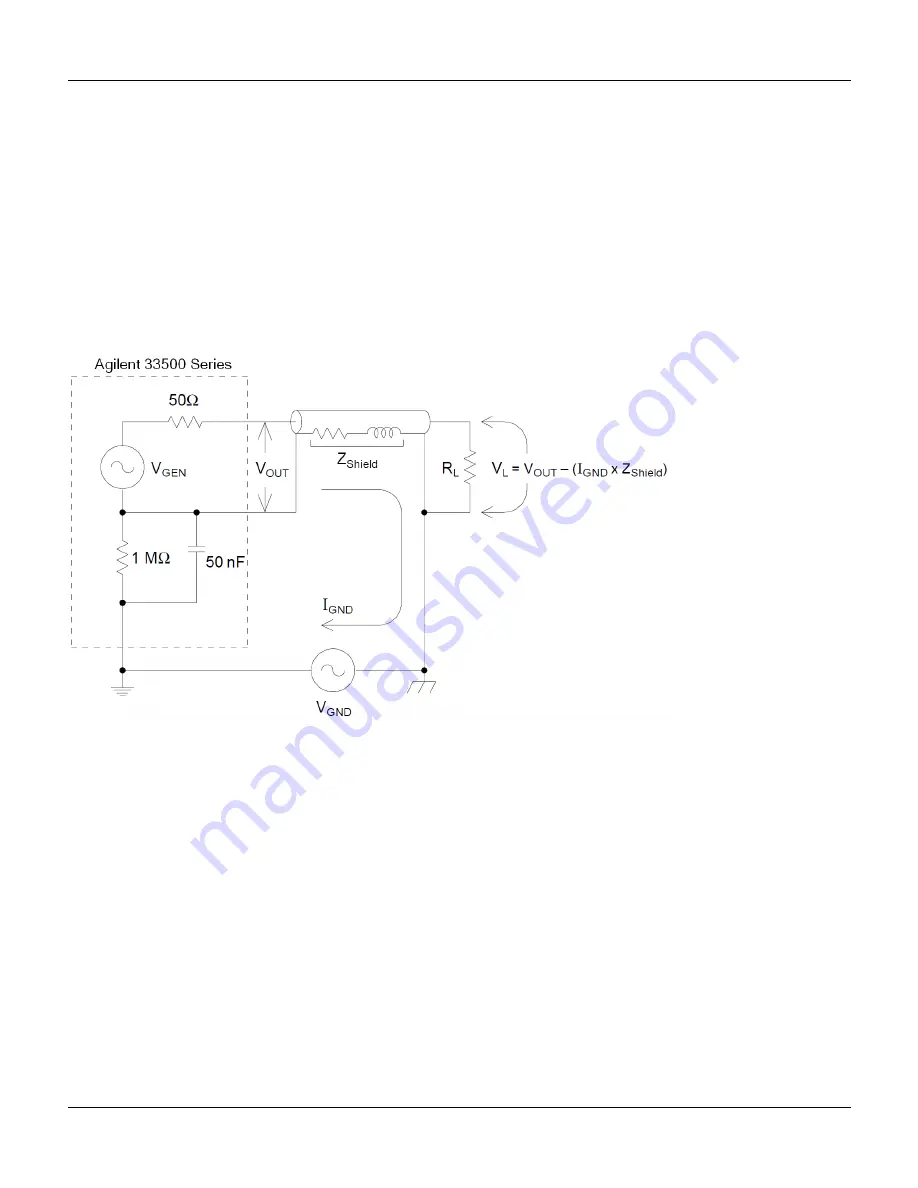
Waveform Generation Tutorial
in arbitrary waveforms that do not use the whole range of DAC codes (-32767 to +32767). Scale arbitrary waveforms
to use the entire range, if possible.
Ground Loops
The signal-generation portion of the instrument is isolated from chassis (earth) ground. This helps eliminate ground
loops in your system and also allows you to reference the output signal to voltages other than ground. The illustration
below shows the instrument connected to a load through a coaxial cable. Any difference in ground potentials (V
GND
)
will tend to drive current IGND through the shield of the cable, thus causing a voltage drop due to the shield’s imped-
ance (Z
SHIELD
). This voltage (I
GND
x Z
SHIELD
) appears as an error in the load voltage. However, since the instrument is
isolated, there is a high series impedance (typically >1 MΩ) in parallel with 50 nF) to oppose the flow of I
GND
and
thereby minimize this effect.
At frequencies above a few kHz, a coaxial cable’s shield becomes inductive, rather than resistive, and the cable begins
to act like a transformer. When this happens, voltage drops in the shield due to I
GND
tend to be offset by equal voltages
in the center conductor, thereby reducing the effects of ground loops at higher frequencies. Coaxial cables with two or
three braided shields are much better than those with single- braided or foil shields because they have lower resistance
and therefore become transformers at lower frequencies.
To reduce errors due to ground loops, connect the instrument to the load using a high-quality coaxial cable and ground
it at the load through the cable’s shield. If possible, make sure the instrument and the load are connected to the same
electrical outlet to minimize further differences in ground potential.
Be aware that the outer shells of the
Sync
and
Modulation In
connectors are connected to those of the main output
connector(s). Cables attached to
Sync
and/or
Modulation In
are therefore potential sources of ground loops. Also be
aware that attempting to drive those connector shells to different voltages can cause high current to flow through the
instrument, possibly causing damage.
Agilent 33500 Series Operating and Service Guide
149






























